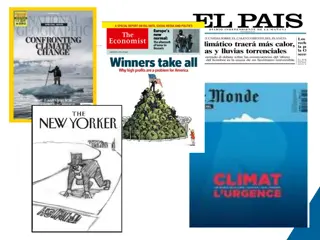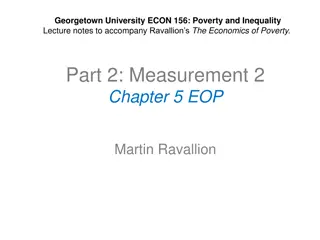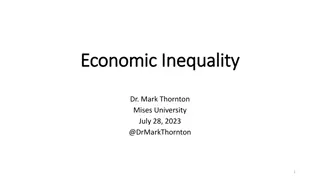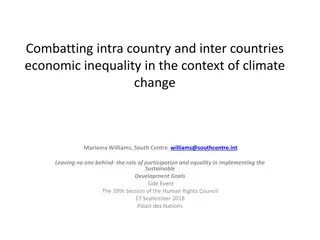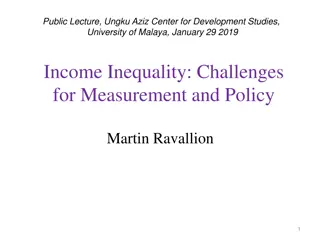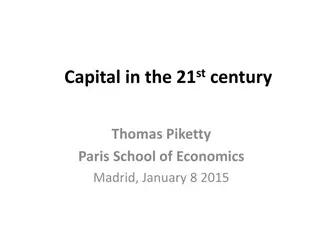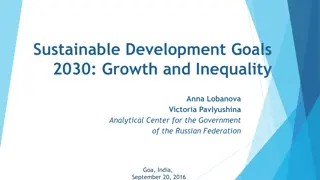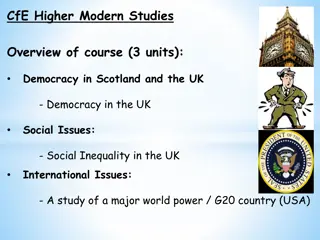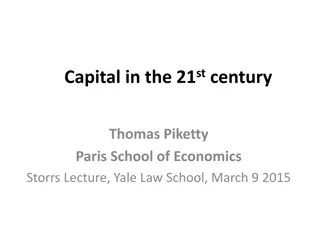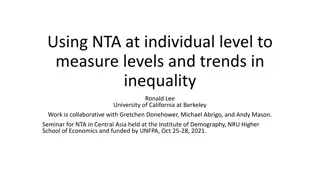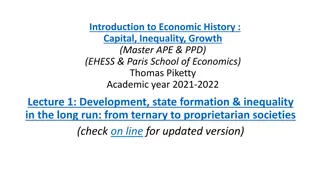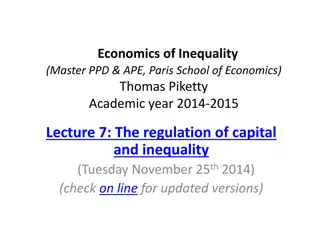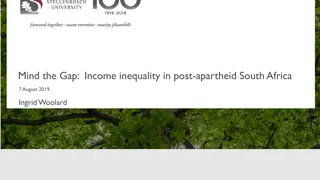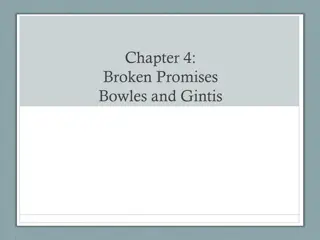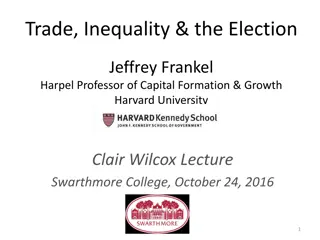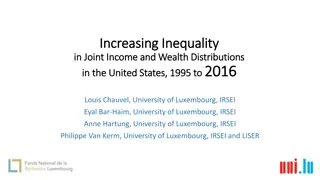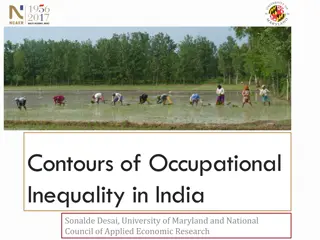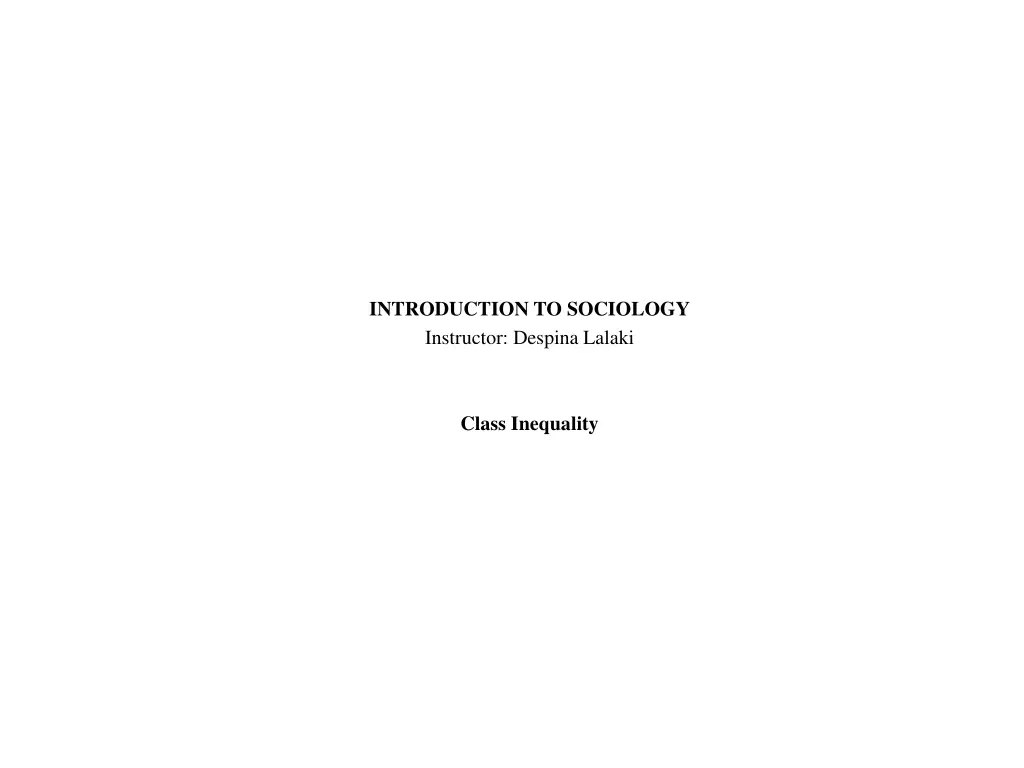
Understanding Class Inequality in Sociology: Marx vs Weber Perspectives
Explore the dynamics of class inequality in sociology through the contrasting viewpoints of Karl Marx and Max Weber. Marx's focus on class conflict and revolution, driven by the exploitation of workers, contrasts with Weber's multidimensional approach emphasizing wealth, prestige, and power. Discover how these theories shed light on the origins and perpetuation of social stratification and inequality.
Download Presentation

Please find below an Image/Link to download the presentation.
The content on the website is provided AS IS for your information and personal use only. It may not be sold, licensed, or shared on other websites without obtaining consent from the author. If you encounter any issues during the download, it is possible that the publisher has removed the file from their server.
You are allowed to download the files provided on this website for personal or commercial use, subject to the condition that they are used lawfully. All files are the property of their respective owners.
The content on the website is provided AS IS for your information and personal use only. It may not be sold, licensed, or shared on other websites without obtaining consent from the author.
E N D
Presentation Transcript
INTRODUCTION TO SOCIOLOGY Instructor: Despina Lalaki Class Inequality
CLASS and INEQUALITY Is inequality a natural part of human culture? Egalitarian Societies archaeological evidence suggests that human evolutionary success relied on cooperation and teh sharing of food, child rearing, and hunting and gathering responsibilities, not on hierarchy, violence and aggresion. Consider contemporray groups suhc as the Amish, a small North American Christian group known for the simple lifestyle and their rejection of labor-saving devices that might make them less reliant on community... Ranked Societies Social patterns of entrenched hierarchy and stratification emerged much more recently in human history. We can trace its roots to the rise of intensive agriculture and populous market towns, where relatively small groups of elite merchants and landholders were able to accumulate wealth. Stratification and inequality became more pronounced in industrialized capitalist economies over recent centuries. The uneven development appears to be accelerating under the forces of globalization Theories of Class Karl Marx (1801 1882): Bourgeoisie and Proletariat Value Theory and Exploitation Exploitation the lever of capitalist accumulation. According to his labor theory value - the key premise of Marxian economic theory - all economic value in capitalist societies results from the labor of those who work directly on products. Exchange value refers to the value of a commodity in the market place. Use value refers to the value that a commodity has for the consumer. Surplus value the exchange value that workers produce with their work which is more than what the capitalists invest in their wages and other costs of production. The origin of capital is surplus values produced by the workers. Alienation and Labor the workers are removed from control over the capitalist-owned means of production and resulting products. Ownership of the means of production gives capitalists the power to set the conditions of labor. Workers work on someone else s product, under conditions designed by others, and in the interest of others . Marx viewed labor positively as a way for individuals to exercise their creative capacities and thought. Class, Conflict and Revolution the fundamental classes in capitalist societies are capitalists and workers and their interests are antagonistic . State and ideology were in the service of the bourgeoisie the ideas of the ruling classes tended to be the ruling ideas.. Ownership and control of the means of mental production The development of class consciousness essential revolutionary force. They optimistically assumed that the working class would gain a class consciousness and of its historical interests and struggle to end capitalism. In its place they would establish a socialist society through common public ownership of at least the major productive, financial and commercial institutions.
Max Weber (1864 1920): Prestige and Life Chances The three-component theory of stratification, more widely known as Weberian stratification or the three class system, was developed by German sociologist Max Weber with class, status and power as distinct ideal types. Weber developed a multidimensional approach to social stratification that reflects the interplay among wealth, prestige and power. Weber argued that power can take a variety of forms. A person's power can be shown in the social order through their status, in the economic order through their class, and in the political order through their party. Thus, class, status and party are each aspects of the distribution of power within a community. Class, status and power have not only a great deal of effect within their individual areas but also a great deal of influence over the other areas. Wealth: includes property such as buildings, lands, farms, houses, factories and as well as other assets Economic Situation Prestige: the respect with which a person or status position is regarded by others Status Situation Power: the ability of people or groups to achieve their goals despite opposition from others Parties Leith Mullings (: Intersectionality among race, gender and class Leith Mullings, a Distinguished Professor of Anthropology at the City University of New York Graduate Center and President of the American Anthropological Association, reexamines class by analyzing the deep connections among class, race, and gender offering an intersectional approach. She asserts that class, in the U.S. and many other areas, cannot be studied in isolation, but instead, must be considered together with race and gender as interlocking systems of power. The Harlem Birthright Project
Pierre Bourdieu (1930 2002): Education and Social Reproduction Bourdieu's work was primarily concerned with the dynamics of power in society, and especially the diverse and subtle ways in which power is transferred and social order maintained within and across generations. In conscious opposition to the idealist tradition of much of Western philosophy, his work often emphasized the corporeal nature of social life and stressed the role of practice and embodiment in social dynamics. his research pioneered novel investigative frameworks and methods, and introduced such influential concepts as cultural, social, and symbolic forms of capital (as opposed to traditional economic forms of capital), the cultural reproduction, the habitus, the field or location, and symbolic violence. Bourdieu developed theories of social stratification based on aesthetic taste in his 1979 work Distinction: A Social Critique of the Judgment of Taste. Bourdieu claims that how one chooses to present one's social space to the world one's aesthetic dispositions depicts one's status and distances oneself from lower groups. Specifically, Bourdieu hypothesizes that children internalize these dispositions at an early age and that such dispositions guide the young towards their appropriate social positions, towards the behaviors that are suitable for them, and foster an aversion towards other behaviors. Bourdieu theorizes that class fractions teach aesthetic preferences to their young. Class fractions are determined by a combination of the varying degrees of social, economic, and cultural capital. Society incorporates symbolic goods, especially those regarded as the attributes of excellence, [...as] the ideal weapon in strategies of distinction. [ Those attributes deemed excellent are shaped by the interests of the dominating class. He emphasizes the dominance of cultural capital early on by stating that differences in cultural capital mark the differences between the classes. The development of aesthetic dispositions are very largely determined by social origin rather than accumulated capital and experience over time. The acquisition of cultural capital depends heavily on total, early, imperceptible learning, performed within the family from the earliest days of life. Bourdieu argues that, in the main, people inherit their cultural attitudes, the accepted definitions that their elders offer them.
How are class and inequality constructed in the United States? A look at the numbers. Income and wealth a classless society... The postwar social mobility disproportionally affected minorities and especially black Americans... GI Bill etc Ethnographic portraits of class in the United States Poor whites in rural Kentucky Downward mobility: The Middle class and the working poor Wealth, inequality and wall street
Ethnographic Portraits of class in the United States Why the poorest county in West Virginia has faith in Donald Trump | Anywhere but Washington https://www.youtube.com/watch?v=eqceHviNBC4
What are the roots of poverty in the United States? The culture of poverty : Poverty as pathology Early proponents of the theory argued that the poor are not only lacking resources but also acquire a poverty-perpetuating value system. According to anthropologist Oscar Lewis, "The subculture [of the poor] develops mechanisms that tend to perpetuate it, especially because of what happens to the worldview, aspirations, and character of the children who grow up in it" (Moynihan 1969, p. 199). The term "subculture of poverty" (later shortened to "culture of poverty") made its first appearance in Lewis's ethnography Five Families: Mexican Case Studies in the Culture of Poverty (1959). Lewis struggled to render "the poor" as legitimate subjects whose lives were transformed by poverty. He argued that although the burdens of poverty were systemic and so imposed upon these members of society, they led to the formation of an autonomous subculture as children were socialized into behaviors and attitudes that perpetuated their inability to escape the underclass. Lewis gave 70 characteristics (1996 [1966], 1998) that indicated the presence of the culture of poverty, which he argued was not shared among all of the lower classes The people in the culture of poverty have a strong feeling of marginality, of helplessness, of dependency, of not belonging. They are like aliens in their own country, convinced that the existing institutions do not serve their interests and needs. Along with this feeling of powerlessness is a widespread feeling of inferiority, of personal unworthiness. This is true of the slum dwellers of Mexico City, who do not constitute a distinct ethnic or racial group and do not suffer from racial discrimination. In the U.S. the culture of poverty that exists in the black community has the additional disadvantage of perceived racial discrimination. People with a culture of poverty have very little sense of history. They are a marginal people who know only their own troubles, their own local conditions, their own neighborhood, their own way of life. Usually, they have neither the knowledge, the vision nor the ideology to see the similarities between their problems and those of others like themselves elsewhere in the world. In other words, they are not class conscious, although they are very sensitive indeed to status distinctions. When the poor become class conscious or members of trade union organizations, or when they adopt an internationalist outlook on the world they are, in my view, no longer part of the culture of poverty although they may still be desperately poor. Although Lewis was concerned with poverty in the developing world, the culture of poverty concept proved attractive to US public policy makers and politicians. It strongly informed documents such as the Moynihan Report (1965) as well as the War on Poverty more generally.
Poverty as a structural economic problem Since the 1960s, critics of culture of poverty explanations for the persistence of the underclasses have attempted to show that real world data do not fit Lewis's model (Goode and Eames, 1996). In 1974, anthropologist Carol Stack issued a critique of it, calling it "fatalistic" and noticing the way that believing in the idea of a culture of poverty does not describe the poor so much as it serves the interests of the rich. She writes, "The culture of poverty, as Hylan Lewis points out, has a fundamental political nature. The ideas matters most to political and scientific groups attempting to rationalize why some Americans have failed to make it in American society. It is, Lewis (1971) argues, 'an idea that people believe, want to believe, and perhaps need to believe.' They want to believe that raising the income of the poor would not change their life styles or values, but merely funnel greater sums of money into bottomless, self-destructing pits. Thus, she demonstrates the way that political interests to keep the wages of the poor low create a climate in which it is politically convenient to buy into the idea of culture of poverty (Stack 1974). In sociology and anthropology, the concept created a backlash, pushing scholars to look to structures rather than "blaming-the-victim" (Bourgois, 2001) Since the late 1990s, the culture of poverty has witnessed a resurgence in the social sciences, but most scholars now reject the notion of a monolithic and unchanging culture of poverty. Newer research typically rejects the idea that whether people are poor can be explained by their values. It is often reluctant to divide explanations into "structural" and "cultural," because of the increasingly questionable utility of this old distinction. Why are class and inequality largely invisible in U.S. culture? The role of the media Voluntary isolation The consumer culture

